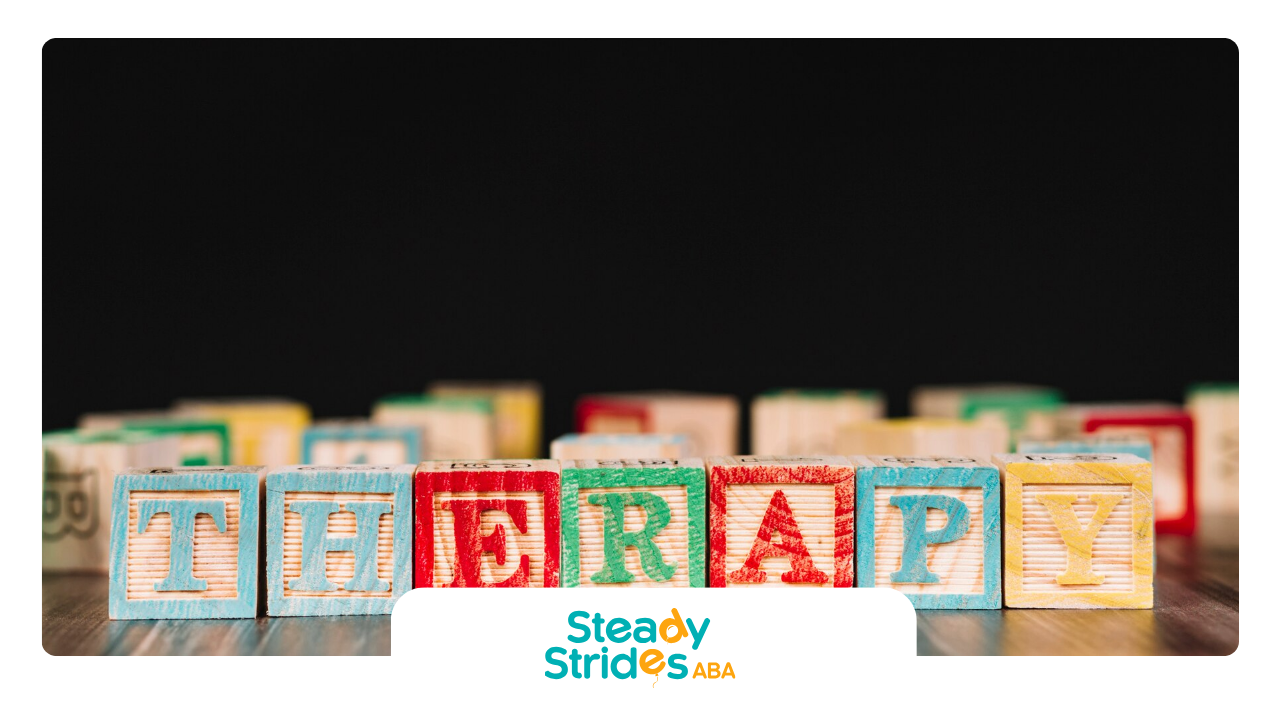Are you seeking the ideal therapy approach to help your child with autism spectrum disorder? Applied Behavior Analysis (ABA) therapy has emerged as one of the most effective treatments for individuals on the autism spectrum. ABA therapy focuses on behavior analysis and intervention, helping children with autism develop essential skills and reduce problem behaviors. One of the key decisions parents need to make when opting for ABA therapy is whether to choose home-based therapy or center-based therapy. Both options have their own unique advantages, and in this article, we will explore the different aspects of each to help you make an informed decision in selecting the right ABA therapy for your child.
Understanding ABA Therapy
Applied behavior analysis, also known as ABA therapy, is a comprehensive therapy approach that applies proven techniques to improve social skills, communication skills, and adaptive behaviors in individuals with autism spectrum disorder. ABA therapy utilizes behavior analysis principles to identify and understand behaviors, assess individual needs, and create individualized treatment plans. The primary goal of ABA therapy is to promote positive behaviors and reduce problem behaviors by implementing evidence-based strategies and positive reinforcement.
The Importance of ABA Therapy
ABA therapy plays a crucial role in addressing behavior challenges in children with autism spectrum disorder. Early intervention through ABA therapy has shown promising results in improving social skills, adaptive behaviors, and overall quality of life for individuals with autism. ABA therapy utilizes positive reinforcement to encourage desired behaviors, helping children develop new skills and eliminate problem behaviors. By focusing on behavior analysis, ABA therapy offers a structured and individualized approach to autism treatment, ensuring each child's unique needs are met with appropriate interventions and support.
How ABA Therapy Works
ABA therapy employs various techniques, such as discrete trial training, to teach new skills and reinforce positive behaviors. A qualified behavior analyst or therapist designs an individualized treatment plan based on the child's specific needs and goals. ABA therapy can take place in different settings, including home-based therapy and center-based therapy, depending on the child's requirements and family preferences. ABA therapy creates a positive environment where children can learn, grow, and succeed by providing consistent support, positive reinforcement, and individualized treatment strategies.
Home-Based ABA Therapy: An Overview
For families seeking ABA therapy in Texas, home-based therapy offers an excellent option to consider. Home-based ABA therapy provides intervention in a natural environment, leveraging the familiar setting of the child's own home to facilitate skill development and behavior change. Let's take a closer look at what home-based ABA therapy entails and why it may be a suitable therapy choice for your child.
What is Home-Based ABA Therapy?
Home-based ABA therapy offers therapy services in the child's home setting, creating a familiar and comfortable environment for intervention. ABA therapists work closely with the child, their family, and other caregivers to develop an individualized treatment plan tailored to the child's unique needs. This therapy setting allows therapy sessions to take place in a context that feels natural and familiar to the child, supporting engagement and participation in therapy activities.
Why Choose Home-Based ABA Therapy?
Home-based ABA therapy offers several advantages for families of children with autism spectrum disorder. One significant benefit is the involvement of the entire family in the therapy process. Home-based therapy allows family members to actively participate in therapy, leading to enhanced communication skills, increased understanding of autism, and better management of problem behaviors. Additionally, home-based ABA therapy provides opportunities for addressing specific family needs, such as toilet training and sibling interaction, in a familiar and convenient setting.
Pros of Home-Based ABA Therapy
- Therapy sessions occur in the child's own home, within a familiar and comfortable environment.
- The involvement of family members in therapy promotes a collaborative approach, leading to better results.
- Home-based therapy allows parents and siblings to observe therapy sessions, encouraging generalization of skills beyond therapy hours.
- Flexibility in scheduling therapy sessions allows for better integration of therapy into the child's daily routine.
- Home-based ABA therapy has shown excellent results in improving communication skills, social interaction, adaptive behaviors, and problem behaviors.
Center-Based ABA Therapy: An Overview
Another excellent option for ABA therapy is center-based therapy, which provides intervention in a structured environment designed specifically for therapy purposes. Center-based ABA therapy offers unique benefits and may be the right choice for some families. Let's explore what center-based therapy entails and why it could be an excellent fit for your child.
What is Center-Based ABA Therapy?
Center-based ABA therapy takes place in designated therapy centers equipped with resources, tools, and a structured environment for therapy sessions. Highly trained behavior analysts or therapists design individualized treatment plans and work with the child in a classroom-like setting. Center-based therapy often involves interaction with other children undergoing therapy, providing opportunities for social skills development and peer interaction.
Why Choose Center-Based ABA Therapy?
Center-based ABA therapy offers several advantages for children with autism spectrum disorder. The structured environment of a therapy center facilitates focused learning and minimizes distractions, ensuring the child can fully engage in therapy activities. Center-based therapy also provides access to specialized equipment and resources that may not be readily available in a home setting. Additionally, the social interaction with peers in center-based therapy can enhance social skills development and promote positive social behaviors.
Pros of Center-Based ABA Therapy
- Center-based therapy provides a structured environment for focused learning and skill development.
- Peer interaction in center-based therapy allows children to practice social communication skills and cultivate positive social behaviors.
- Therapy centers often offer various therapy programs tailored to individual needs, providing a comprehensive approach to treatment.
- Center-based therapy offers a professional and supportive environment, with access to specialized equipment and resources.
- Center-based ABA therapy allows behavior analysts and therapists to work collaboratively, ensuring the child receives the best possible intervention.
Comparing Home and Center-Based ABA Therapy
When deciding between home-based ABA therapy and center-based ABA therapy, it's essential to consider your child's needs, family dynamics, and therapy goals. Let's explore some key factors to help you make an informed decision.
Environment and Comfort
Home-based ABA therapy offers intervention in a familiar environment, which can reduce distractions and optimize the child's comfort during therapy sessions. Therapy activities can be tailored to specific areas of the home, facilitating skill development in familiar surroundings. Center-based therapy, on the other hand, provides a structured environment designed specifically for therapy purposes, offering a professional setting conducive to focused learning.
Individual Attention vs Peer Interaction
Home-based ABA therapy ensures one-on-one attention from the therapist, allowing therapy to be customized according to the child's unique needs. Center-based therapy provides opportunities for peer interaction, which can enhance social skills development and promote positive social behavior. The decision between individual attention and peer interaction depends on the child's specific social communication needs and problem behaviors.
Parental Involvement and Support
Home-based ABA therapy actively involves parents in the therapy process, enabling them to observe therapy sessions, reinforce learned behaviors, and gain a deeper understanding of their child's progress. Center-based therapy, on the other hand, offers guidance and support from experienced professionals, providing parents with a network of resources and information to help support therapy goals. Consider your family's preference for involvement and support when choosing between home-based and center-based ABA therapy.
Making the Decision: Home or Center-Based?
When making the decision between home-based ABA therapy and center-based ABA therapy, consider your child's unique needs, your family's lifestyle, and the guidance of professionals in the field of behavior analysis. Taking these factors into account will help you select the therapy setting that best suits your child's specific requirements and offers the most effective intervention.
Consider Your Child's Unique Needs
Evaluate your child's needs, behavior challenges, and adaptive skills to determine which therapy setting will best address those needs. Assess how each therapy environment can support your child's progress and provide intervention to improve skills and behaviors specific to your child.
Think About Your Family's Lifestyle
Take your family's lifestyle into consideration when deciding between home-based and center-based therapy. Reflect on how therapy sessions in either setting will fit within your family's typical day, consider the convenience of the therapy location, and think about the impact of therapy scheduling on other family members' activities.
Consult with Professionals
Seek guidance and consultation from behavior analysts, therapists, or autism service providers to gain further insight into the benefits of home-based ABA therapy and center-based ABA therapy. Their expertise and experience in the field of behavior analysis can help you make an informed decision based on your child's unique needs and therapy goals.
Life After Choosing ABA Therapy
Once you have chosen the ABA therapy setting, whether home-based or center-based, it is essential to have a plan in place to ensure successful implementation and progress monitoring.
Implementing the Chosen ABA Therapy
Implementing the chosen ABA therapy involves following a treatment plan tailored to your child's needs and specific goals. Establish clear intervention objectives, set a consistent schedule, and utilize positive reinforcement to encourage progress and adaptive skills development. Regular communication with the therapy team and behavior analysts will help assess progress, make appropriate adjustments, and ensure continuity in therapy services.
Observing Progress in Your Child
As your child engages in ABA therapy, closely observe their progress in various areas, such as communication skills, social interaction, adaptive behaviors, and problem behavior reduction. Through behavior analysis, your child's therapist will continuously monitor progress, adapt treatment strategies, and work towards helping your child reach their full potential.
How Can ABA Therapy Improve Your Child's Life?
ABA therapy can significantly improve your child's life by enhancing communication skills, social skills, adaptive behaviors, and overall quality of life. Through positive reinforcement and evidence-based intervention techniques, ABA therapy helps individuals with autism spectrum disorder develop new skills, reduce problem behaviors, and maximize their potential for a more fulfilling and independent life.
Conclusion
When deciding between home and center-based ABA therapy for your child, it's crucial to consider factors like their unique needs and your family's lifestyle. Both options have their pros and cons, so it's essential to consult with professionals to make an informed decision. Remember, the goal is to improve your child's life and help them reach their full potential. By implementing the chosen therapy and closely observing your child's progress, you can create a supportive environment that fosters growth and development. No matter which option you choose, the ultimate aim is to provide the best possible care and support for your child's well-being and future success.












